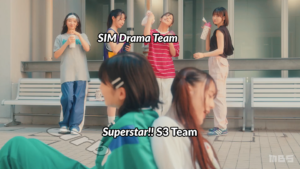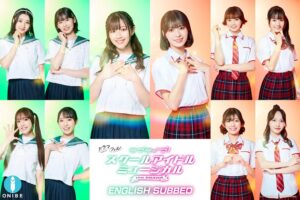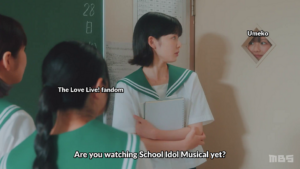Calls 101:
If you’ve ever attended a Japanese concert (also known as a “live), you may have seen some people shouting unique phrases and waving lightsticks. These actions derive from the combination of chanting and dancing known as “wotagei”, and has made its way to anisong lives in the form of “calls”. With calls, the fans act as one to give it their all to support their favorite performers that are on stage.
HOW
In some shape or form you may have already performed calls. If you’ve ever been to a normal concert, you may have seen the performer(s) hype up the crowd by having shout along with them, yelling “Oi! Oi! Oi!” or “Hey! Hey! Hey” Calls are more or less an advanced version of this, while also including arm movements and lightsticks.
Your standard list of calls would consist of
- “Hai!” Repeated in a chant or in combo (e.g “Hai! Hai! HaiHaiHaiHai!”
- “Fu!”/”FuFu!
- “Fuwa” combo
- “Se-no!” Signal
- PPPH combo (“Oooooo HAI!”)
Along with calls, lightsticks are an essential tool to fully enjoy the concert experience. These come in two different varieties, penlights and glowsticks.
Penlights are electronic lightsticks that can contain one color or a multitude of selections. Most popular brands for penlights would be Ruifan’s Kingblades and Lumica’s Lumiaces. Both brands can be found and purchased at Amazon.com, and limited edition varieties can be found in Japan or at specific retailers.
Unlike penlights, which can be used for long periods of time, cyalumes (chemical lights) are one time use only, with durations ranging from 30 seconds-10 minutes, and can only express one color. Despite these widely differing traits, a special type of cyalume known as the UO (aka Ultra Orange) is widely used at anisong and idol concerts. UOs tend to shine brighter than even penlights and are used at one’s peak excitement during a song. UOs come in different shapes and shine intensity, but the most popular brand would be Lumica’s Daisenkous.
THEY ONLY LAST FOR ABOUT 30 SECONDS TO 1 MINUTE. <— VERY IMPORTANT
WHERE?
Outside of Japan, lives can be held at special events, like anime conventions, and even at your local theater. The efforts for more people to experience lives have exponentially increased over the year, streaming lives as they happen or having exclusive delayed screenings outside of Japan.
WHY?
At its core, calls are a form of communication between the audience and performer(s). Fans are given a chance to express their excitement and cheer in a uniform fashion, energizing both the performer and atmosphere. It’s a chance for all fans to come together and express the efforts they made to support their idols.
DOs and DON’Ts at Lives
- Try not to attract attention to yourself
Acting out of the norm can be a distraction to both the people around you and the performer. - Always keep your arms in front
Performing dances and wotagei at lives are always a no-no, considering there’s little space to move around in the first place. Whatever you do, make sure to keep your arms and lightsticks closely in front of you, so you don’t hit your surrounding neighbors. - Never throw anything
Throwing any sort of object during, including penlights/glowsticks, is a blatant show of disrespect. Not only that, but people can be injured because of such actions (it’s happened before). - Stay hydrated
Lives go for as long as 1-5 hours. Standing, waving your arms to the beat of the music, and doing calls the entire time will most definitely wear you out. Make sure to stay hydrated so you can maintain that energy for even longer. Also, it wouldn’t hurt to bring some throat lozenges with you too. -
NO RECORDING
Being able to go to lives and watch live/delayed viewings are always a privilege. If you see someone recording the concert in any way (video/audio/photos) kindly ask them to stop and delete the file. If they continue, report them to a staff member in the area.



